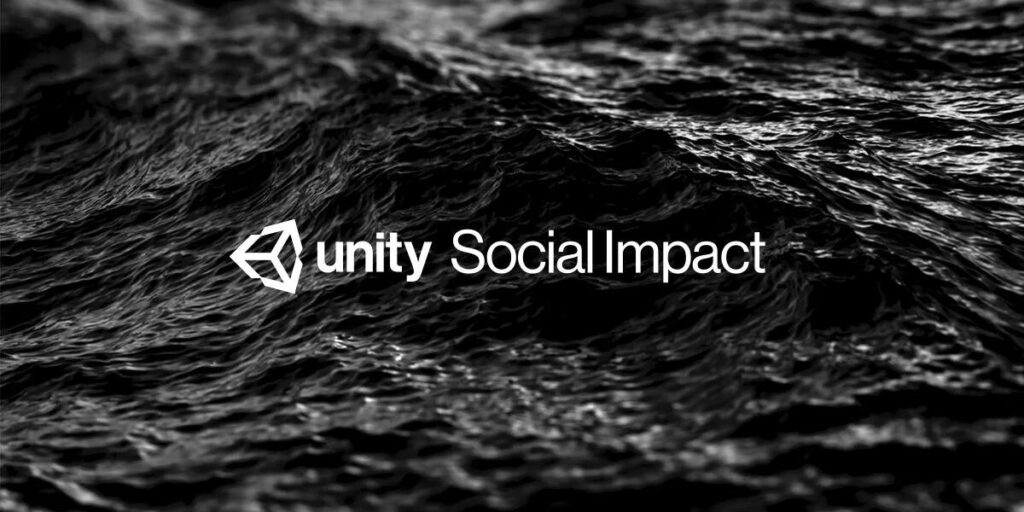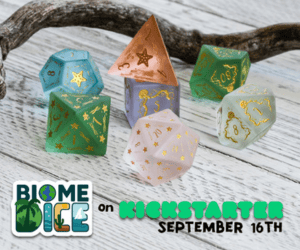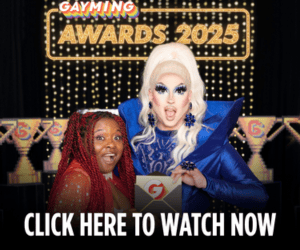
Unity Reveals Winners of Unity for Humanity Rare Impact Challenge
Unity, the world’s leading platform for creating real-time 3D content, today announced the winners of the Unity for Humanity Rare Impact Challenge: Apart of Me and What It’s Like To Be Me.
Created in partnership with Selena Gomez’s Rare Beauty’s Rare Impact the Unity for Humanity Rare Impact Challenge is a grant honoring leading creators building mental health-focused experiences. Winners receive funding, mentorship and technical support to advance and scale their projects.
Rare Impact wants to work to cut down the stigma around mental health issues, and create awareness for chronic loneliness, and talk about issues related to mental and emotional wellbeing, and hopes that this challenge they are working with Unity can help with just that.
The Rare Impact Challenge winners were chosen based on each project’s commitment to impact, viability, community connection, innovation, and inclusivity, and use of Unity’s real-time 3D technology to tell their stories:
Apart of Me is a mobile game that supports young people and their families through the heartbreak and confusion of grief, helping them learn to live fully despite their loss. They work in partnership with Child Bereavement organizations in the UK including Child Bereavement UK, Grief Encounter, and Hospice UK, and is founded by Louis Weinstock, child, adolescent, and family psychotherapist, and Co-Founder of Bounce Works.
What It’s Like To Be Me was designed by Marc Svensson, founder and CEO of Helsa, and Kate Luxion. Players are taken through a VR experience where they are introduced to five personal stories, through the perspective of a member of the LGBTQ+ community experiencing discrimination. What It’s Like To Be Me is based on real-life experiences, showing the true mental, emotional, and physical strain of minority stress reality, along with highlighting the strength of each storyteller.
Check out this trailer of What It’s Like To Be Me:
To explore this hugely impactful challenge further, I talked to both Jessica Lindl, Vice President of Social Impact at Unity, and Marc Svensson, the creator of What It’s Like To Be Me:

Hi Jessica, how long has the Unity for Humanity Rare Impact Challenge been running for and what was the motivation behind establishing it?
JL: We know that Unity’s technology is being used to drive meaningful social change through stories that help us to better understand one another and our shared world.
Founded in the Fall of 2020, Unity Social Impact is a division of Unity aimed at empowering employees and creators of all backgrounds to foster a more equitable, inclusive, and sustainable world. We grant our talent, technology and financial support to enable positive, inclusive change across education, economic opportunity, sustainability, digital health and well-being.
Unity Social Impact partnered with Rare Beauty’s Rare Impact to create the Unity for Humanity Rare Impact Challenge to honor and support creators addressing mental health and well-being through the use of real-time 3D. We opened up the call for submissions in November 2020 and the challenge closed on January 15, 2021.
What was it about these two winners that stood out the most?
With over 4 million children and young people bereaved by COVID-19, Apart of Me really struck a chord. Apart of Me is a mobile game that supports young people and their families through the heartbreak and confusion of grief, helping them learn to live fully despite their loss
What It’s Like to Be Me is a virtual reality experience that takes users through five personal stories where they can embody and navigate from the perspective of a member of the LGBTQ+ community experiencing discrimination. Each story is based on real-life experiences, showing the reality of the mental, emotional, and physical strain of minority stress, along with the strength and resilience of each storyteller. This is an incredibly powerful experience and we are proud to support our creators building this important work.
What is Unity’s hope for the future of RT3D playing a bigger role in people’s mental health and every day lives?
We believe that everyone deserves the ability to live a healthy life – and that often means having access to high-quality healthcare tools or services. Unity’s tools are being used to explore innovative and practical solutions for managing physical and mental health, train medical professionals, and test new healthcare technologies. Through Unity Social Impact, we see how technology is being used to raise awareness for and normalize mental health conversations, and as a method for treatment of mental health.
The quality and diversity of the entries we received for the Unity for Humanity Rare Impact Challenge underscores the power of real-time 3D to uniquely address this important area of social impact. Along with Rare Impact, we’re proud to support and amplify these voices.

Hi Marc, what was the inspiration behind the concept for What It’s Like to Be Me?
A couple of years back I founded Helsa, a company that works to improve mental health and wellbeing in the LGBTQ+ community through research, training, and support. We deliver training workshops to organisations and health care providers on LGBTQ topics, educating the general population about the role stigma and shame plays in mental health outcomes in our community. When explaining how minority stress works to a, typically primarily straight, audience, attendees often express getting that ‘aha-moment’ when they suddenly understand and appreciate how minority stress impact LGBTQ+ people’s mental health and wellbeing. One day Kate and I discussed how much stronger that ‘aha-moment’ potentially would be if the audience could more directly experience what it’s like to be in that moment when you are subjected to discrimination and stress going about your everyday life… and like that, the ‘What It’s Like To Be Me’ project was born.
Kate and I are both social science PhD candidates at the Social Research Institute, at University College London, researching sexual and gender minority identities and mental health outcomes. Due to the heteronormative society we live in, LGBTQ+ people are 3-4 times more likely to suffer from common mental health problems such as depression and anxiety. This health disparity is caused by minority stress, unique stress we as LGBTQ+ people experience because of our sexual and/or gender minority identities. This is in addition to the general stress we all experience going through life. One example of minority stress is expectations of rejection. Because of the stigma in our society, I might automatically assume people think less of me, or even find me repulsive or disgusting, because of my minority identity. Another minority stress factor is microaggressions, which are small everyday acts of discrimination. For example, being stared at and followed around while shopping, or even being blatantly ignored by a shop assistant once I am ready to pay.
Where do you see the future of What It’s Like To Be Me? What further expansions would you like to build in?
We see great potential for this project to grow exponentially and globally, bringing to life many more stories from diverse social contexts, countries and cultures. Rather than just being a fantastic tool for us to use in Helsa’s training workshops, we are planning to develop specific stories set in school environments that will be used to educate young people, teachers, and administrators about LGBTQ+ discrimination. There are also plans for stories set in health care environments to specifically educate health care providers. Furthermore, we would love to develop country specific stories as part of the global expansion. I strongly believe the potential of this project to bring awareness and understanding of sexual and minority people’s daily struggles is endless.
Another way we see this project expand is to focus directly on the LGBTQ+ community. Instead of educating straight people about LGBTQ+ stories of discrimination, stress and resilience, it could equally be used to help LGBTQ+ people with their own identities, allowing them to explore environments that are affirming, safe and celebratory of their unique identities and identity expressions. For example, we could create a VR queer café environment where the user can freely explore and interact with the various LGBTQ+ characters inhabiting the space. This could be a fantastic and safe way for young sexual and gender minority people to explore their own sexual and gender identity development.
What further applications can you see Unity’s RT3D being used for in the LGBTQ community?
I think modelling real-life situations from the safety, privacy and comfort of your own home is really where RT3D can make a difference to LGBTQ communities. Marginalised communities sorely lack access to education, and real life role models on which to learn and model behaviour. I can imagine that one day, an LGBTQ person living in secrecy and darkness inside a family, community, or country that doesn’t accept them, or perhaps is even dangerous for them, might be able to use an RT3D simulation to access lifelike experiences, learn important ways to stay safe, immerse in LGBTQ+ culture, and maybe even meet others like them in a safe space. It’s another way in which the world is opening up, gaps are closing and little pockets of isolation are able to start being slowly filled.
Created with Rare Beauty’s Rare Impact, this challenge is a part of the existing Unity for Humanity Program within Unity Social Impact, which celebrates and empowers creators who are using real-time 3D to inspire change. If you are using real-time 3D to build environment-focused content, consider submitting to the Environment & Sustainability grant by June 3. Join Unity’s Social Impact Mailing List to stay up-to-date on these projects, upcoming grant opportunities, and more.







